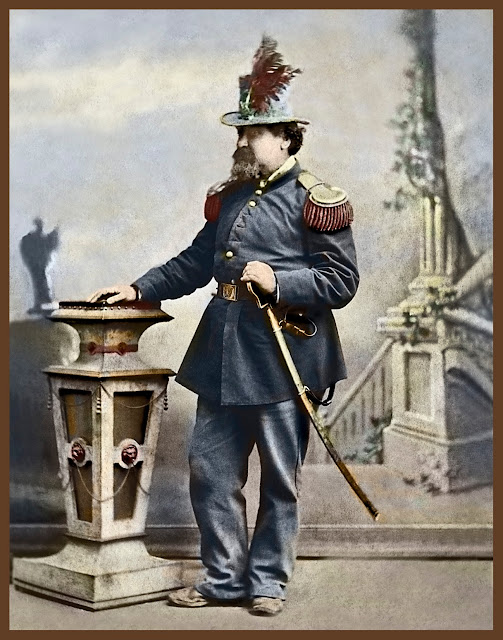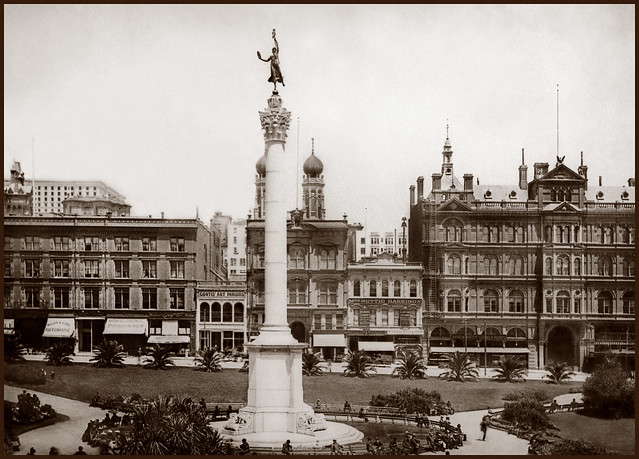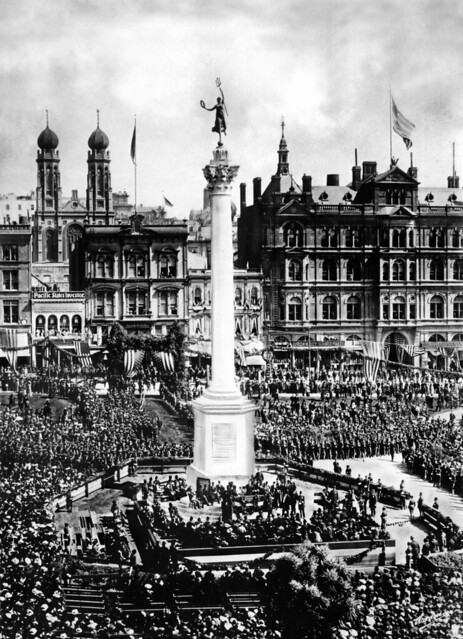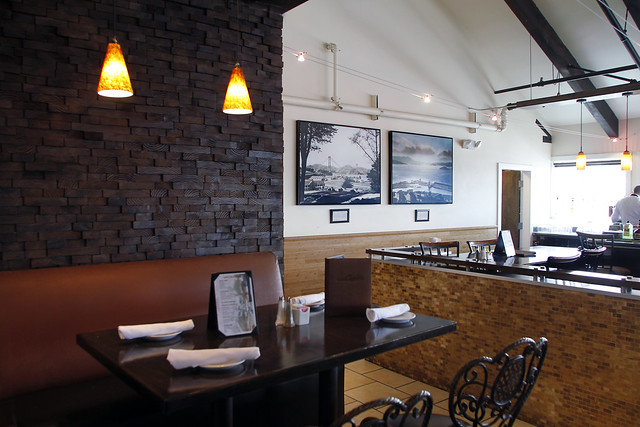
Bay Bridge, West Tower, c. 1937
____________________________________________________
The Bay Bridge originally accommodated 3 lanes of car traffic for each direction on the upper deck, the lower deck being reserved for trucks, buses, and trains. In 1957, the railroad tracks were removed to allow eastbound traffic on the lower deck and westbound traffic on top.
Designer
Charles H. Purcell
Chief engineer was
Ralph Modjeski.
Construction began July 9, 1933
Picnic on Yerba Buena Island
Viewing East toward Long Wharf & Oakland Mole, 1886
___________________________________________________________
First established by the military in 1868, Yerba Buena Island was originally intended for artillery batteries to defend the Bay. It served as a regular Army camp until 1880, when the island was then transferred to the Navy. Extending into the Bay in the distance are the Long Wharf, used for shipping, and the Oakland Mole (right), which served commuters traveling across the Bay.
The railroad extended its Oakland wharf to the edge of the deep water in San Francisco Bay to allow larger vessels to connect with its overland trains and to shorten the trip by ferry to the opposite shore. The Long Wharf (on the left) was used for shipping, Oakland Mole pier (right) was used for passengers. The pier extended over 2 miles into the Bay, serving commuters traveling to and from San Francisco and the East Bay.
This 116 acre island later became the mid-point of the Bay Bridge,
which was completed in only three years, opening in November 1936.
___________________________________________________________
The Push to Span the Bay
San Francisco's leaders recognizing that they were on the wrong side of the Transcontinental railroad, realized that to protect their growing economic ambitions that bridging the Bay was not optional - this was a matter of when not if.
 |
The Emperor has Spoken:
A Bridge Shall be built...
__________________________________________________________ |
WHEREAS, we issued our decree ordering the citizens of San Francisco and Oakland to appropriate funds for the survey of a suspension bridge from Oakland Point via Goat Island; also for a tunnel; and to ascertain which is the best project; and whereas the said citizens have hitherto neglected to notice our said decree; and whereas we are determined our authority shall be fully respected; now, therefore, we do hereby command the arrest by the army of both the Boards of City Fathers if they persist in neglecting our decrees. Given under our royal hand and seal at San Francisco,
this 17th day of September, 1872
–
Emperor Norton
(PS: what was the reason we are not naming this after him again?)
Emperor Norton Bridge Campaign
(this image from collection of San Francisco Images)
 Bay Bridge Tower Construction from Rincon Hill Area c. 1934
Charles M.Hiller, photographer, from the Library of Congress
Bay Bridge Tower Construction from Rincon Hill Area c. 1934
Charles M.Hiller, photographer, from the Library of Congress
_________________________________________________
Bay Bridge Construction from Telegraph Hill, c. 1934
_________________________________________________
This view over waterfront piers shows one of the four towers of the Bridge
at different stages of construction. Building a bridge across the Bay had been a dream since the days of the Gold Rush often attributed to
Emperor Norton who in 1872 issued a decree demanding
the construction of the bridge.
Construction of the Bridge finally commenced in 1933, and was completed only three years later. Timothy L. Pflueger was the chairman of the committee of consulting architects on the
Bay Bridge project.

The crossing from Yerba Buena Island to Oakland was spanned by a 10,176 foot cantilever bridge, the longest bridge of its kind at the time. To enable a shorter path across the Bay, a tunnel was created through the Island - the largest diameter bore tunnel in the world at 76’ wide, 58’ high. The Bridge was completed in 1936, accommodating automobile traffic on the upper deck, and the Key Rail system, buses and trucks on the lower deck.
Workers under the Caisson supporting the San Francisco
Bay Bridge during construction
__________________________________________________________
"Underneath the world's largest caisson, 92' wide by 197', which we will launched today at Moore Dry Docks, Oakland, this section will be christened when a beribboned bottle will be broken over its brow by Mrs. C. H. Purcell, wife of Chief Engineer of the SF Bay Bridge.
This caisson will be be sunk through mud and clay to bedrock and form the bottom of a concrete and steel structure extending 478.5 feet from the floor of the bay to a point 298.5' above the water midway between SF and Yerba Buena Island"

Installing the Shroud atop of the San Francisco-Oakland Bay Bridge, 1936
__________________________________________________________________
"Installation of "Shroud" on the $77MSF-Oakland Bay Bridge on the center anchorage.
The shroud will cover eye-bars and "A-Frame" atop this mid-water monolith to which giant cables are attached. It will soon be filled with concrete for a rigid grip. 6-20-1936"
Workers on North Catwalk
________________________________
Crew securing 100-foot sections of wire-mesh flooring on the cables at
Tower West two • August 17, 1935

Bay Bridge Lighting During Construction, December 1935
___________________________________________________
Chosen for their soft, non-glare illumination, the sodium vapor lamps hung from the
Bay Bridge’s western span suspension cables added a festive quality.
The Bridge was now less than a year from completion,
and would soon enable significant expansion to the East Bay.
East Side of Yerba Buena Island during construction of Cantilever Section • c.1935
_________________________________________________________
Yerba Buena Island during the construction of the Cantilever section of the Bay Bridge
Two 500-foot anchor arms are started to connect 1400' of double deck bridge just east of Yerba Buena Island. The western anchor arm, shown at the right, will be completed when it reached Pier E2
in the water just off the island The 1400-foot cantilever span will not be joined until early 1936 accordingly to Chief Engineer C. H. Purcell

Hoisting the last section of the Cantilever section of the Eastern Span from a barge positioned on the Bay below. This is very nearly the section that collapsed on to its lower deck during the 1989
Loma Prieta Earthquake • c1936
_________________________________________________________

West Tower of Bay Bridge, Under Construction, 1935
___________________________________________________
The West Tower of the Bay Bridge rises 281 feet above the Bay,
with a concrete anchorage sunk 235 feet below the water line. Its
total height is taller than that of the largest of the Pyramids of Egypt
and it contains more concrete than the Empire State Building.
(this image from collection of San Francisco Images)
__________________________________________________
North and South Cables spanning the Anchorage of the Bay Bridge, Photographed October 15, 1935
_________________________________________________________
Opening Day Ceremony, 5th Street Terminus
November 12, 1936
___________________________________________________
5th Street terminus (off ramp) of the Bay Bridge on the day of its ceremonial opening - traffic moved in two direction in the day of c ours with the Key Line system and other rail systems on the lower level. Remember, when the Bay Bridge opened automobile traffic was on the upper deck, moving in two directions, with rail and public transport on the lower deck.
This image shows the elegant original design with a plaza-style experience upon entry or exit from the Bridge. I hope to find a image of the center point and will post that as soon as I can locate it.
Clyde Sunderland, Photographer, from the Library of Congress
Eye Bolt of the Original Eastern Span
________________________________________________
Hand-Tinted black and white photograph by Bennett Hall ©1980/2014
shot with an 8 x 10 view camera on mobile dolly
________________________________________________
Articles and stories in this post are © Bennett Hall / San Francisco Images / Business Image Group
Emperor Norton Bridge Campaign
________________________________________________
the New Eastern Span construction: "The Bridge Builders" by Joseph Blum Photography
________________________________________________
Flickr Collection on the Bay Bridge and Treasure Island
Wikipedia on the San Francisco Oakland Bay Bridge
Bancroft Library Digital Archive of Construction
_____________________________________________________________________
Donate to the Oakland History Room at the Oakland Library
SOURCES: Unless otherwise indicated, these images were sourced from the Oakland History Room, Oakland Public Library, and have been digitally mastered by San Francisco Images / Business Image Group.
PURCHASE: You can acquire copies of these images framed and unframed through our World Wide Archive Web Galleries. A portion of all sales will be donated to the History Room to assist them with their work preserving local history and to maintain their collections.


































